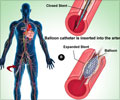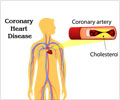A knowledge gap still exists in understanding microvascular syndromes, coronary microvascular dysfunction in particular, and treatment strategies that are particularly targeting the microvascular dysfunction are lacking.

‘A knowledge gap still exists in understanding microvascular syndromes, coronary microvascular dysfunction in particular, and treatment strategies that are particularly targeting the microvascular dysfunction are lacking. ’





As this condition’s pathogenesis remained uncertain it was labeled as ‘cardiac syndrome X’. However, in the last few years, the landscape is shifting with an increasing number of physicians accepting the notion that a dysfunctional microvasculature is the cause of angina in some patients. Efforts towards understanding the pathophysiological mechanisms underpinning MVA are of paramount importance in the process of developing therapies that optimally treat these patients.
Lambrinos adds: “Currently, standard anti-anginal drugs such as beta-blockers, calcium channel blockers and nitrates offer some relief from symptoms. Despite the availability of these therapies, however, KOLs interviewed by GlobalData highlight that a significant need remains in the current treatment paradigm for additional agents that target the specific heterogeneous pathogenesis of MVA.”
Source-Medindia












